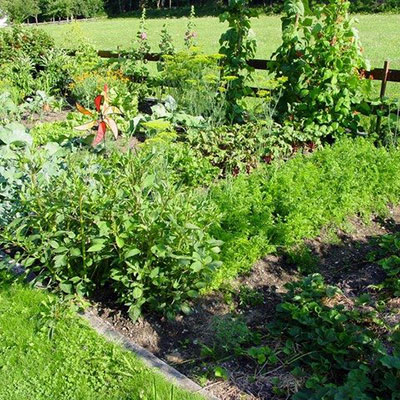
With increasing awareness of what we should be eating as a nation, people in the UK are taking a genuine interest in what is ending up on the kitchen table, and the term 'Grow Your Own' is sprouting up everywhere.
A leading UK garden centre chain, has seen an increase in 'grow your own' sales in 2009, by up to 82% compared with the same period last year, with sales of over 100,000 tomato plants in just a two month period.
Many of us like to know exactly where our veg is coming from, and there is no better way of being sure than to 'grow your own' produce. Whether you have an allotment, or are lucky enough to have space in your own garden, the potential to grow a variety of fresh edible goodness is almost limitless. However, you will need a few tools and garden aids to make sure the seedlings that you are nursing along, will eventually grow into strong healthy plants.
The Importance Of Compost
A great way to start is to make sure you have a good rich compost. Garden soils vary from area to area in the UK, but even the driest of clay soils can be mixed in with compost and blood fish & bone to make a healthy, mineral rich soil. If you are adventurous, with your compostable garden and kitchen waste, a good investment is a composter or compost bin. There are various types on the market, and perhaps the most popular is the traditional wooden style. It can be easily installed and you can accelerate the waste breakdown process by using a composter with a clear plastic cover.
Once you have decided on what you are going to grow, you will need to work out how you are going to nurse the plants through their early weeks of Double Max Light Coldframe growth. If you have space indoors, window ledges or a conservatory, can be a great way of keeping seedlings warm and watered in their pots, for most though, indoor space is at a premium and this is where a cold frame or green house can come in extremely handy.
Coldframes - Greenhouses
An ideal choice is a greenhouse, and there are a wide range of sizes. You can also choose whether you want a traditional glass glazed or polycarbonate glazed structure. Polycarbonate greenhouses are becoming more popular as they are safer (especially if you have young visitors to your garden), and they provide very good insulation for your plants. Some people prefer the traditional glass green houses as they do look attractive and natural light can penetrate the glass effectively - it's down to personal preference and your budget.
A cheaper option is a cold frame, although you will not fit as much into a cold frame, they are portable, and will slot into virtually any garden no matter how strapped for space you are. Some people will use two or three at once, or there is the option of a double cold frame. Cold frames are a great way to give your seedlings a head start, to battle the increasingly unpredictable British weather. There are various designs on the market but a good tip, is to look for one with a lower front egde (or slanted glass top), to allow maximum sunlight in to aid growth.
Raised Beds & Planters
Certain produce will thrive if kept in a nice warm greenhouse, for instance, 'tomatoes', whereas produce such as our versatile friend 'the potatoe', will flourish in an exposed garden patch. There are many varieties of food you can look at growing, a good way to start is by taking a look at the RHS Plant Finder online.
A great way to grow more hardy plants is by opting for a raised planter. These are usually small and compact, easily fitting into most gardens. If you are keen on DIY, a raised bed is worth considering. This is done simply, by installing sleepers on top of each other, and then filling in the internal area, with your soil and compost.
These methods of growing are generally less back-breaking than a traditional veg patch, without quite so much kneeling or bending down. By using a raised bed, it's easy to protect your crop with netting, to stop those moths or greedy birds having a munch, it's also that little bit more of an effort for garden pests to reach.
Another aspect to rasied beds and planters is aesthetic appeal, they can look compact and attractive in your garden, complementing other traditional-style garden furniture.
Reaping What You Sow
In all, it's not just about eating healthily, or being sure about where your food has come from, it's also about enjoying your garden and getting back to basics. If you have young children or grandchildren, they will also benefit and if you are creative, you may just plant the seeds of healthy eating in their young minds, not to mention gaining satisfaction in reaping what you have sown.
So, for those of us who are looking at becoming more self sufficient, if you invest carefully, and dedicate a little time and effort, you can be rewarded with some tasty home grown produce... and you'll be 100% sure of the freshness. The hardest part, will be choosing what to grow!!!
